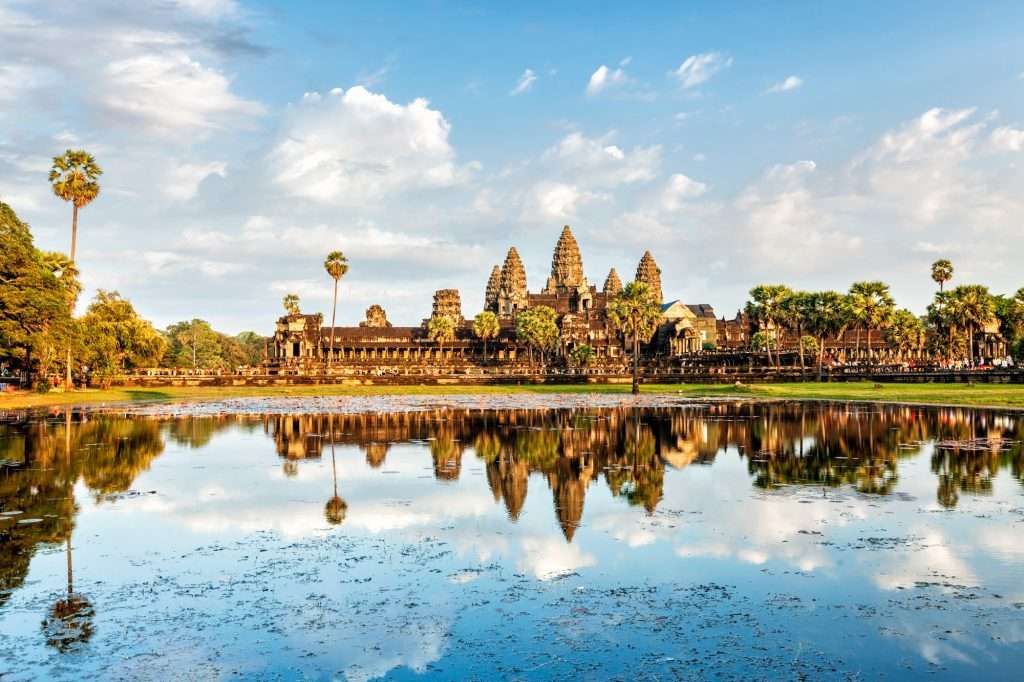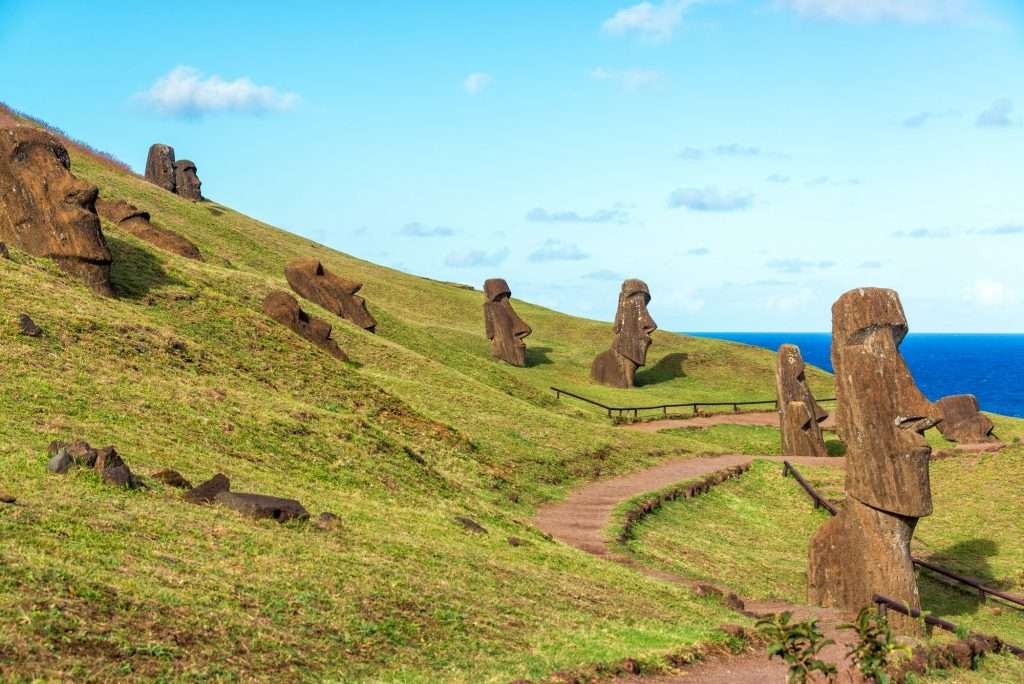This article is about the top 10 most historical places in the world, and maybe some good places to visit that aren’t on the list but are still worth seeing if you have the chance. It is also about how some of these places have shaped world history, especially modern history, and some of the good things that have come out of them.
Most historical places in the world are still standing, but they have been altered since they came to be. They have been used, reused, and reused again as resources for learning and tools for teaching. They have been a site for conflict, a place for healing, a place for prayer, a place for exploration, and a place for learning. They have shown us who we are, and who we want to be.
Also read:
So we are gonna introduce you to some of the beautiful monuments in the world. Please take a look at the list and see some of the things that are still worth the visit.
Petra, Jordan

The first written record of Petra was discovered in 1701. It was written in Nabataean Arabic by the Greek explorer Agatharchides, who was the first person to describe Petra. The text was translated into English in 1808 by the English explorer John Flaxman. The Nabataeans were an ancient Arab nomadic tribe who lived along the border of Petra.
Petra is an ancient city in Jordan, situated in the southwest corner of the country. It is a former Nabataean and Byzantine settlement, which flourished from the fourth to the seventh centuries AD, but was abandoned in the seventh and eighth centuries AD. Petra was declared a UNESCO World Heritage Site in 1979, as one of the world’s greatest archaeological sites. Born as an ancient Nabataean city, Petra has drawn thousands of visitors yearly. The remaining site is a collection of archaeological sites, including the Treasury of the Judgement Seat, the Anoar Ruin, the Royal Tombs, the Treasury, and the Temple of the Winged Lions.
The Colosseum, Rome

One of the most famous Roman monuments, the Colosseum was built primarily to host gladiatorial contests and public spectacles. The building was originally constructed to hold 50,000 people. While that number was filled at times, most notably during the annual games, the Colosseum often held 70,000 to 80,000 spectators. This success was limited by the fact that the amphitheater was designed primarily to host the games of the Colosseum, and that the amphitheater’s design allowed for very large crowds, but not the sort that would fill the entire structure
The size of the Colosseum was impressive, but what was even more remarkable was the quality of the entertainment that was on offer. The Colosseum was home to some of the most brutal and bloody spectacles in history, including human fights and animal hunts. It is one of the most important historical places in the world.
The Great Wall of China

The Great Wall of China is the world’s longest man-made structure. It is a series of fortifications, or defensive walls, that run for approximately 3,500 miles (5,850 kilometers) along the border between China and Russia, and which were built to protect China’s lands, people, and culture from the north. It is one of the best surviving Great Walls in the world and was originally constructed as four separate sections of the stone wall that have been joined together seamlessly over time to create one great wall that is more than 2,741 miles (4,474 kilometers) long when measured.
The wall is thought to have been built between 264 BC and 220 BC during the Warring States period of Chinese history when China was divided into many warring states. By 221 BC a set of canals had been constructed to keep the wall’s supplies flowing and to improve communications along the canal routes.
Taj Mahal, Agra

The Taj Mahal is one of the most recognizable and visited monuments in the world. Considered by many the most beautiful building in the world, it is also one of the world’s great architectural achievements.
It is a marvel of symmetry and proportion, a testament to the genius of its architect, and a source of great pride for the people of India. It is also a great work of literature. The Taj Mahal is a classic example of a perfect writing example. It is a well-written, well-structured, and engaging text, which is why it is so famous and admired.
Arguably the most beautiful building in the world, the Taj Mahal is a testament to the skill, dedication, and sacrifice of those who built it. The Taj Mahal is a symbol of love, remembrance, and respect for those we have lost, and for those who will live on in our hearts. It is a monument to the lives of those who have passed away, and a reminder of what is worth fighting for. Arguably the most beautiful building in the world, the Taj Mahal is a testament to the skill, dedication, and sacrifice of those who built it.
Machu Picchu, Peru

Machu Picchu, also known as the Old Temple, is a citadel, monastery, and temple complex in the Andes mountains of Peru that was once the most important city in the Inca Empire. It is a UNESCO World Heritage Site and one of the most famous ruins of the ancient world. It was discovered by the Spanish in 1536 and was declared a national park in 1982. It contains some of the best-preserved medieval constructions in the Americas and is one of the best places to see Inca architecture.
The Inca Empire was one of the great empires of the ancient world. It was one of the most advanced civilizations of its time, and had a profound impact on the development of other cultures.
Angkor Wat, Cambodia

Angkor Wat takes center stage in the UNESCO World Heritage Site list. This monumental temple complex on the outskirts of ancient Angkor located in Cambodia’s Siem Reap province was built entirely by hand, without the use of any machines, around the 11th century AD. It is believed that Angkor Wat was constructed as a monument to the Hindu god Vishnu and his wife Lakshmi.
The Khmer Empire, also known as the Khmer Kingdom, was an empire that swept through Southeast Asia from the ninth century to the fifteenth century, at the height of which is controlled almost all of Cambodia, Laos, and Vietnam. Its language is Khmer, and it spoke a language distinct from Sanskrit and Chinese. The Khmer Empire was founded by Jayavarman II, also known as Indravarman I, a king of the Khmer Empire who reigned from 802 to 816. The empire reached its greatest extent under the reign of Indravarman VI.
The Pyramids of Giza, Egypt

Giza is a pyramid complex located on the Giza plateau in Egypt, between the two pyramids of Khufu, and just east of the Great Pyramid of Khufu. The complex was built during the Old Kingdom and afterward expanded especially during the Middle Kingdom for religious and burial purposes. It is also known for its step pyramid.
The Pyramids of Egypt, built about 4,000 years ago, are the best-preserved ancient wonders of the world and contain the most intricate carvings of any structure in the world.
The Giza Pyramids, along with the Sphinx, were the first of the Seven Wonders of the Ancient World. Nearby to the east are the three stepped pyramids of Khafre, built circa 2500 BC, and that of Cheops, which was built circa 2500 BC. To the northwest are the three pyramids of King Khufu, which most visitors consider the more impressive of the three pyramids. The eastern three pyramids were built for Khufu and his two successors, King Sneferu, and King Chephren.
The Acropolis, Athens

The Acropolis is the most famous and best-preserved classical monument in the world and the ancient citadel of Athens. The Acropolis in its entirety served several purposes at once, in various roles, and over various centuries. Traditionally, the Acropolis, like the Parthenon at Athens, was viewed as the most important historic monument in Athens and was declared a national monument of Greece on May 8, 1961. Today, the Acropolis remains the most important tourist attraction in Athens, and the Acropolis Museum is the most visited museum in Greece.
One of the best-known legends about the is the story of the Acropolis Trojan War. The war, which took place during the 12th and 13th centuries BCE, was a conflict between two alliances: the Greeks and the Trojans. The Greeks, led by King Agamemnon of Mycenae, came to the aid of the goddess Athena, who had been asked by Paris, the Trojan king, to choose a husband for his daughter, Helen. When Paris refused to give Helen to Agamemnon, the Greeks attacked Troy, which was defended by the Trojan king, Odysseus.
Easter Island

One of the most mysterious and fascinating ancient cultures in the world is the culture of Easter Island (Rapa Nui), which is located in the southeastern Pacific Ocean. Easter Island is famous for its massive stone heads and for the moai, the statues of its inhabitants. The moai were originally thought to be anthropomorphic representations of the islanders, but it is now understood that the statues were used in rituals to provide food for the people, who lived mainly on Rapa Nui, a small island in the center of the main island. Easter Island is also well known for its history, which includes the famous tale of Polynesian colonization, the so-called Rapa Nui legend.
Easter Island is the most remote inhabited place on Earth. It is a small island in the South Pacific Ocean, about 2,300 miles east of continental Chile. The only way to reach Easter Island is by boat. It is generally agreed that the first Polynesians settled on Easter Island sometime between 300 and 400 CE.
The Leaning Tower of Pisa, Italy

The Leaning Tower of Pisa, also known as the Pisa Tower or the Pisa Cathedral, is a medieval bell tower in Pisa, Italy. The tower is the third tallest structure in the city of Pisa and one of the best-known landmarks of the city. The tower was originally designed and built as the bell tower for the church of San Michele in 1298. It is best-known for the tilting of its base, which is currently at a 5-degree angle, which is enough to tilt pedestrians who are standing on the lower level.
It is also known as the Piazza del Duomo, which is a structure located in the heart of the city of Pisa, Italy. The tower, which stands at a height of 51 meters, was built between 1363 and 1372 to serve as a monumental entrance to the city. It is one of the most recognizable buildings in the world, with tourists flocking to see the building leaning at an angle of roughly three-quarters of a meter towards the north. The reason for this tilt is that the tower is built on top of a small hill, which means that the ground level changes over time.


